
- Home
- India
- World
- Premium
- THE FEDERAL SPECIAL
- Analysis
- States
- Perspective
- Videos
- Sports
- Education
- Entertainment
- Elections
- Features
- Health
- Business
- Series
- In memoriam: Sheikh Mujibur Rahman
- Bishnoi's Men
- NEET TANGLE
- Economy Series
- Earth Day
- Kashmir’s Frozen Turbulence
- India@75
- The legend of Ramjanmabhoomi
- Liberalisation@30
- How to tame a dragon
- Celebrating biodiversity
- Farm Matters
- 50 days of solitude
- Bringing Migrants Home
- Budget 2020
- Jharkhand Votes
- The Federal Investigates
- The Federal Impact
- Vanishing Sand
- Gandhi @ 150
- Andhra Today
- Field report
- Operation Gulmarg
- Pandemic @1 Mn in India
- The Federal Year-End
- The Zero Year
- Science
- Brand studio
- Newsletter
- Elections 2024
- Events
Why Tamil Nadu’s sacred groves are under threat

Nenmeli village in Tamil Nadu’s Chengalpet is lush green. Spread over nearly 24 acres in the village are over 50 varieties of trees. This mini jungle of sorts extends a dense canopy to peacocks, snakes, monkeys, porcupines, rabbits and a variety of birds. Over three decades ago, Nenmeli’s sacred grove was, however, on the verge of being lost forever.In the early 1990s, Nadhitha...
Nenmeli village in Tamil Nadu’s Chengalpet is lush green. Spread over nearly 24 acres in the village are over 50 varieties of trees. This mini jungle of sorts extends a dense canopy to peacocks, snakes, monkeys, porcupines, rabbits and a variety of birds. Over three decades ago, Nenmeli’s sacred grove was, however, on the verge of being lost forever.
In the early 1990s, Nadhitha Krishna, researcher and director of CPR Environmental Education Centre (CPREEC), Chennai took it upon herself to restore the sacred grove of Nenmeli to ensure the ecological balance of the region and religious sentiments of the inhabitants are preserved.
But over 20 per cent of the sacred groves in Tamil Nadu are facing the risk of being lost forever.
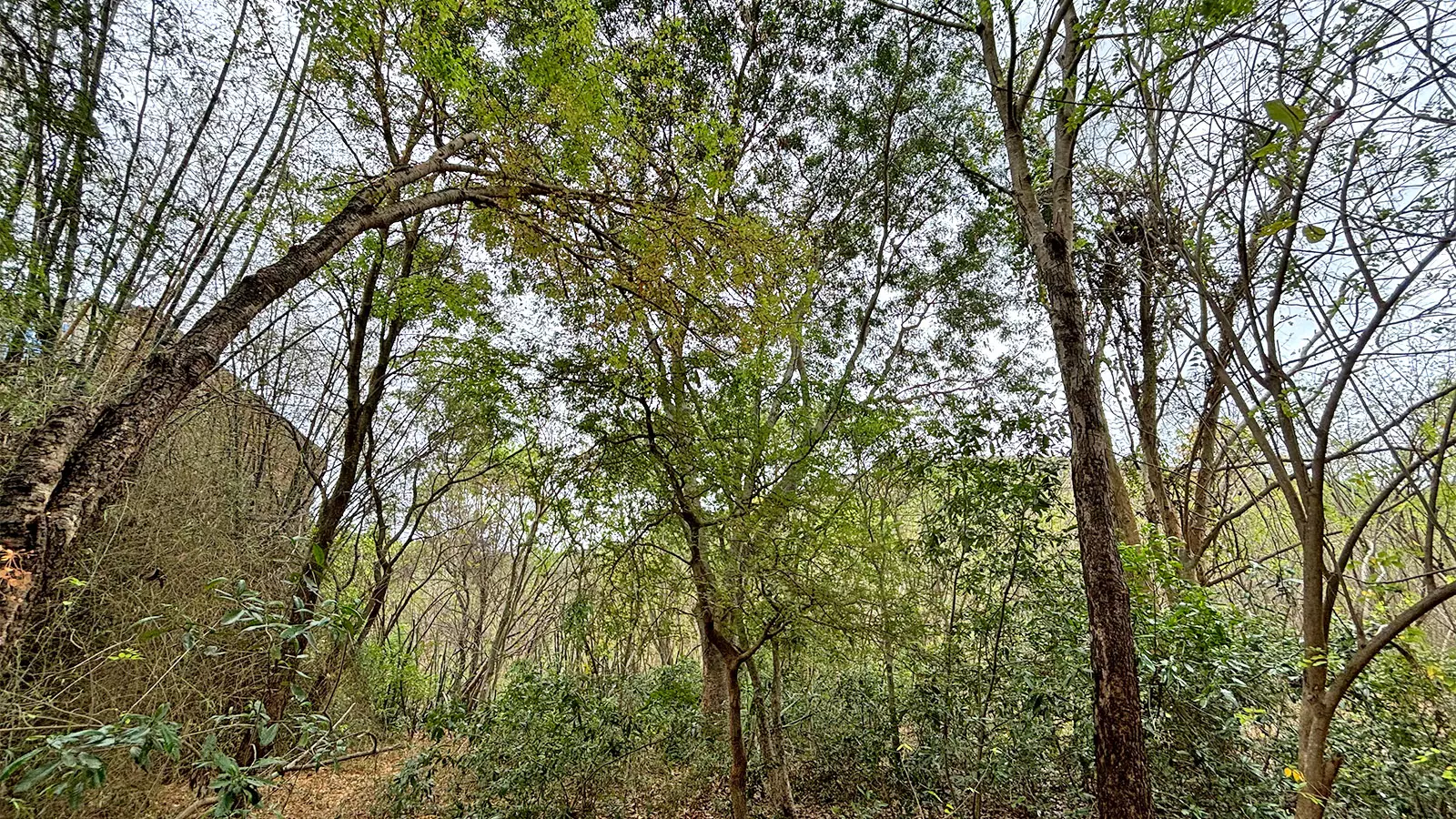
A scared grove in Tamil Nadu. Photos: Pramila Krishnan
A legacy of prehistoric traditions of nature conservation, sacred groves are patches of forest that rural communities protect and revere as sacrosanct. They are found world over. The mentions of sacred groves can be traced both in Greek and Sanskrit classics. Many call them ‘cultural forests’ because they are so deeply held in people’s spiritual beliefs that not a tree is felled nor a creature is harmed within its boundaries.
Acting as treasure troves for naturalists, the groves often serve as repositories of ancient trees, species of medicinal plants, deer, birds, lizards, frogs and other creatures that have become rare elsewhere.
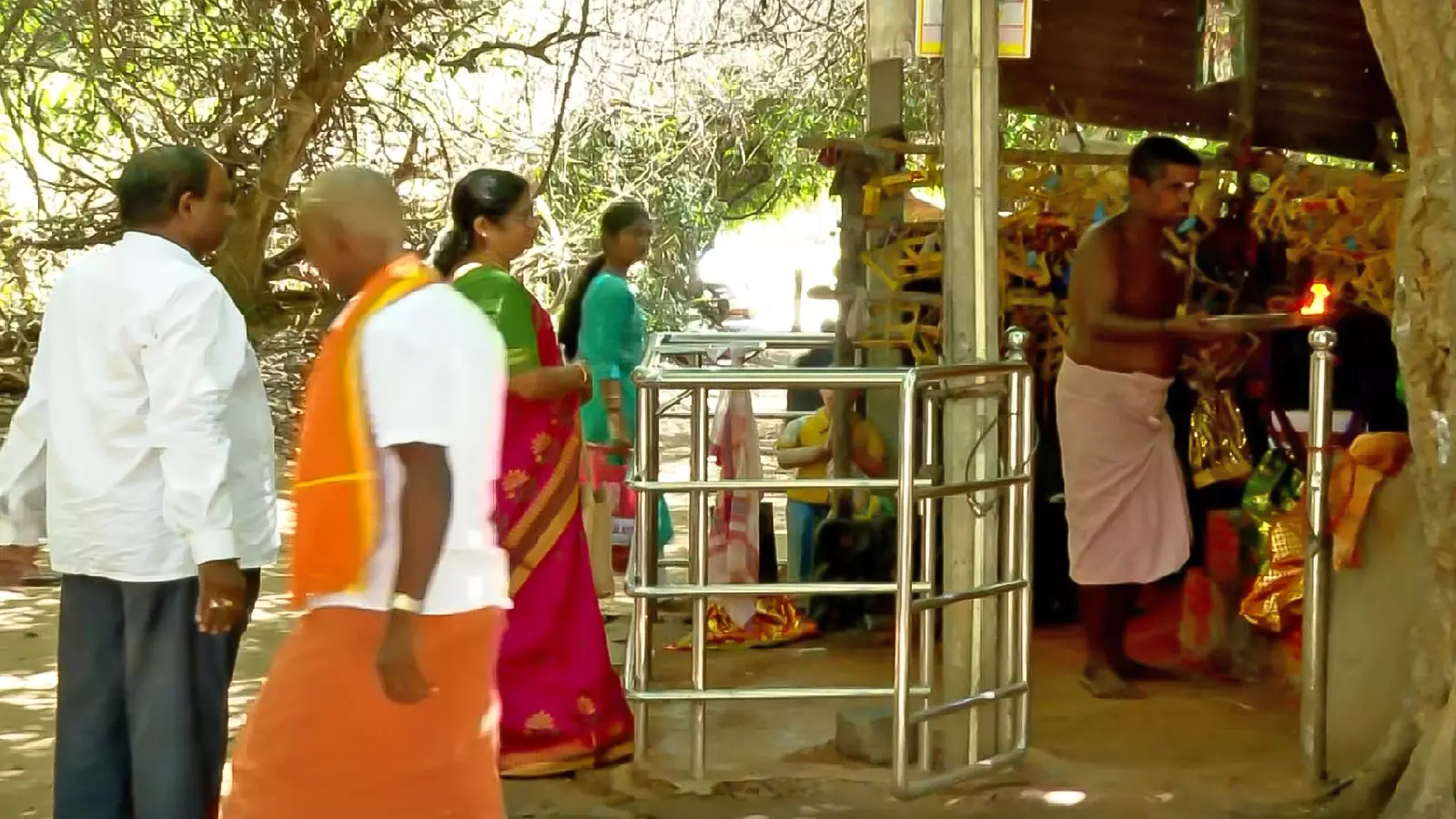
A scared grove temple in Viluppuram.
Realising the importance of sacred groves, researchers at CPREEC in Chennai, which works under the Union Ministry of Environment, Forests and Climate Change, are making a serious bid to protect them. CPREEC, on its part, has documented over 10,500 sacred groves across India, including 1,200 in Tamil Nadu. The institution’s findings indicate that many sacred groves in Tamil Nadu have been severely damaged due to concretization of forest areas, natural calamities, and in some villages, trees being uprooted to build large temples.
Sacred groves are identified by differently across India. They are called “koyil kaadu” in Tamil Nadu, “pavithiravanam” in Andhra Pradesh, “Lai Umang” in Manipur, and “Devarkadu” in Karnataka. Experts point out that the groves are mentioned in many literary works and epics including the Ramayana. The shape of the peepal tree found in seals from the Indus Valley civilization is another example of how nature worship started from sacred groves in India.
Their degradation is a huge concern for environmentalists.
Binding the ecosystem in belief
Nadhitha Krishna, who has so far restored 52 sacred groves across Tamil Nadu, says many groves are degrading due to a lack of awareness and poor maintenance.
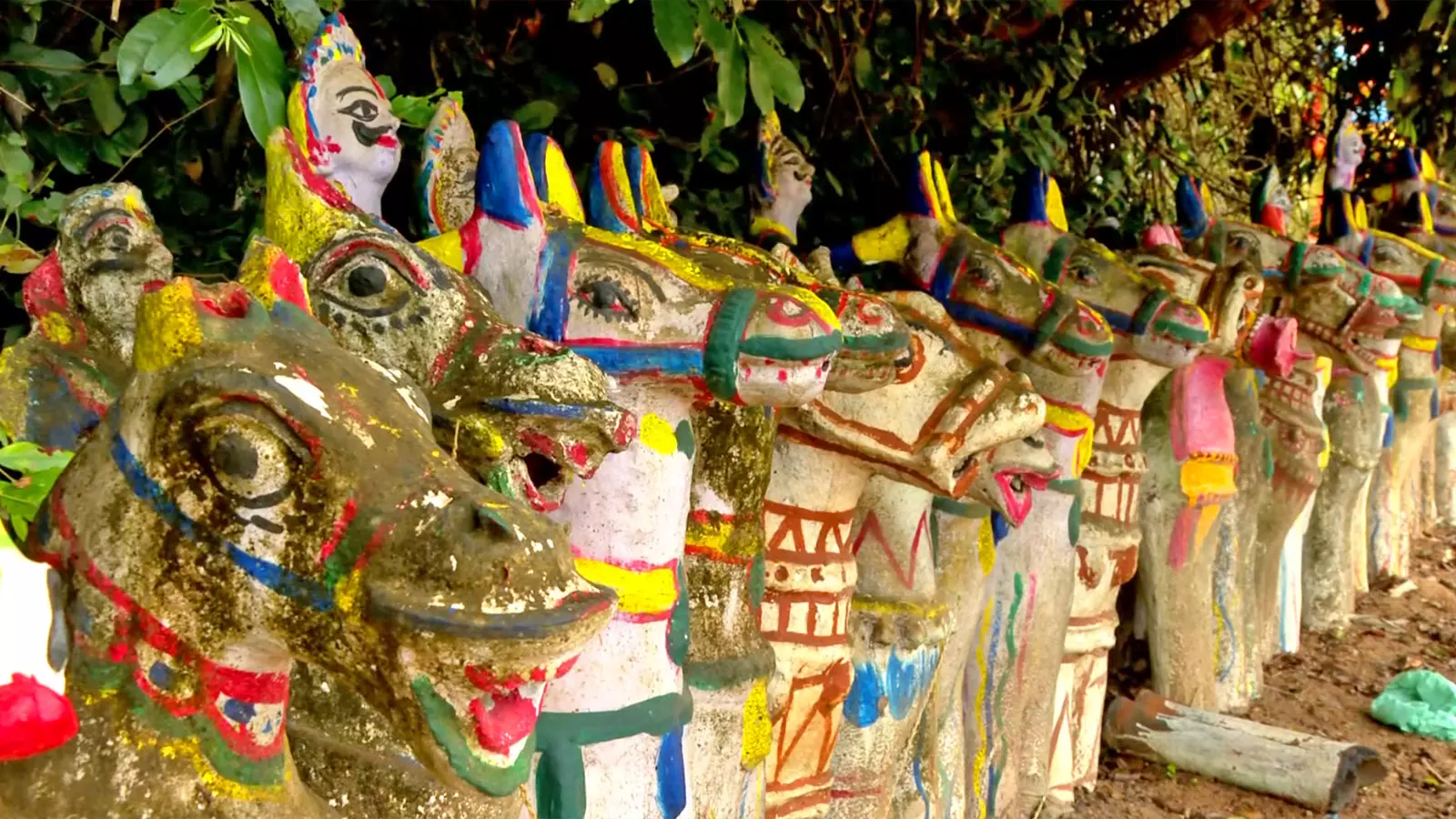
Horse figurines in a sacred grove in Viluppuram.
“They are degraded to an extent that in some villages the grove has shrunk to one or two acres from 20-30 acres. In one village in Thanjavur district, we saw just one tree inside an agricultural land that was once a scared grove. When we asked the villagers about the lone tree, they said they left that one tree in memory of the sacred grove. In some places, people build big temples and cut down trees to make way. The dearth of awareness of the grove concept among villagers and government officials is one reason for the non-restoration of lost groves,” she said.
When The Federal visited the sacred grove in Nenmeli village, many residents like 62-year-old K Kanagavalli were eager to share their attachment to the grove. “Nobody could enter this forest without permission. This belongs to Amman (local deity) here. There are many medicinal plants and herbs around. People are only allowed to pluck leaves in case of illness. Many of us get healed from small illnesses using these herbs. Otherwise, villagers don’t even pick up dry twigs or cut trees because they fear the wrath of the deity,” Kanagavalli said.
Jothi, another resident who works as a guardian of the grove, says snakes find the area a safe haven. “You can spot at least three termite mounds here which are in use by snakes. We consider all these trees, plants, and animals as sacred because this grove is part of the temple,” she said.
Asked why she is restoring groves, Nadhitha connects the dots between sacred groves and climate change.
“They are very important because they are the last repository for local plants and animals. One village might not be the same as another village. One might be in hills, another in plains, and one in a valley. But wherever we have groves, they enrich biodiversity. We are talking about climate change and global warming. These groves have in the past acted as carbon sinks and require less investment than any greenwashing project,” she explained.
When The Federal visited a sacred grove at Keelputhupattu village in Viluppuram district, the irreversible damage caused by the 2011 Thane cyclone was visible.
Priest Perumal, who conducts poojas and also helps devotees pluck herbs for ailments, says the sacred grove of the Manjaniswara Ayyanarappan deity used to be a thick forest a decade ago.

In the early 1990s, Nadhitha Krishna took it upon herself to restore the sacred grove of Nenmeli.
“We lost many trees in this grove. There were over 100 varieties of trees and innumerable varieties of herbs. This temple existed even before the British regime. My ancestors told me this place used to be a large forest but shrunk over the years. I saw how several trees were lost in the Thane cyclone. Though the government took efforts to plant saplings, the density has not improved in recent years,” Perumal told The Federal.
A coming together of the sacred and science
Botanist P. Sudhakar, who has travelled across India, observed that many villagers used these groves for first-aid needs. “This is not just a spiritual place. People use herbs and greens for ailments like joint pain, insect bites, cough, and for milk secretion in breastfeeding mothers. Earlier, Siddha and Ayurveda practitioners and healers used medicinal plants from groves. The shrinkage of groves has put an end to many local homemade remedies in villages,” he said.
While the groves acted as carbon sinks and home for a variety of flora and fauna, they are helped recharge and replenish groundwater.
“Most groves have percolation ponds to save rainwater, which in turn recharges the groundwater table. Groves contribute to the micro-climate of the village and act as a valuable gene pool for local species,” said Sudhakar.
Sacred groves in Tamil Nadu are protected by the Hindu Religious and Charitable Endowments (HRCE) Department. When The Federal reached out to K. Manivasan, secretary of the HRCE department, regarding the degradation of these groves, he stated that the department takes action whenever such cases are brought to their attention.
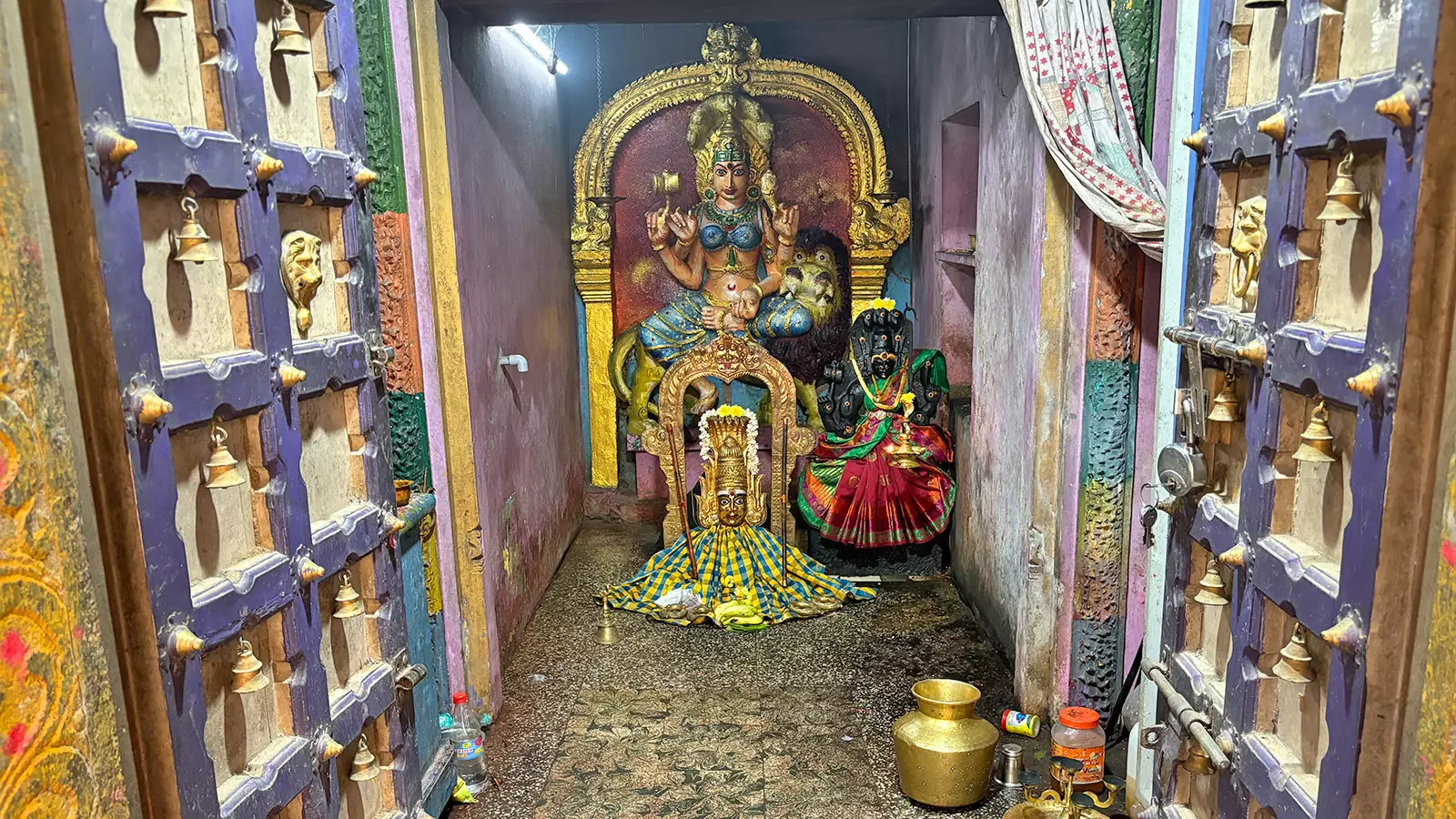
A temple in a sacred grove.
“In many cases, villagers construct concrete structures and large temples through crowdfunding, often without notifying the authorities or filing complaints,” he said.
Sacred groves and carbon sequestration
According to a research paper published in the International Journal of Environment and Climate Change, which analysed the current status of sacred groves in India, the actual number of sacred groves in the country has not been properly recorded.
“It was found that generally 70% of the local people around the sacred forest areas in the Northeast are quite ignorant about the available resources and their status. It is essential to document all the existing sacred groves in India, which are invaluable treasures of biodiversity,” said the research paper.
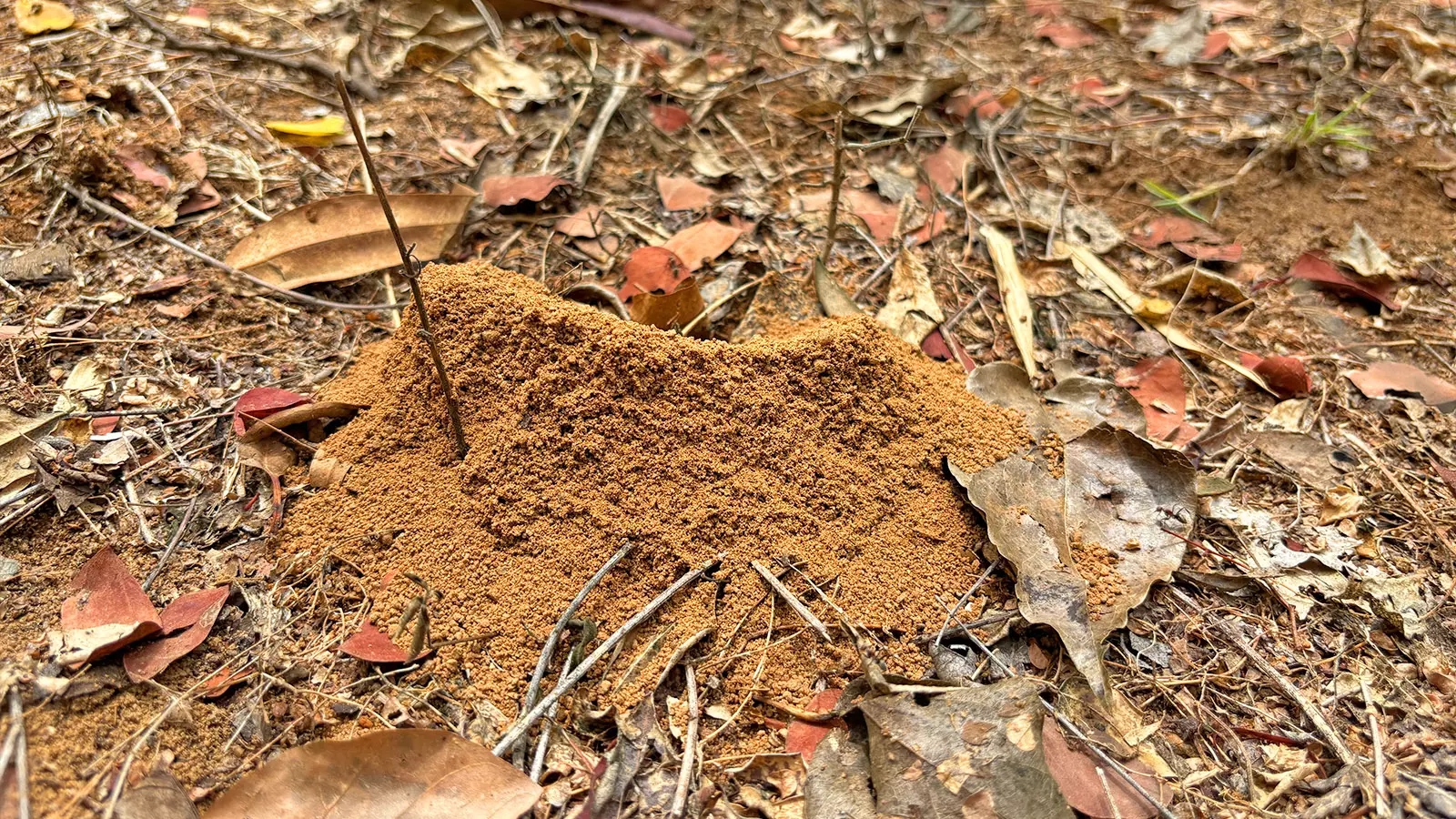
Many call sacred groves ‘cultural forests’ because they are so deeply held in people’s spiritual beliefs that not a tree is felled nor a creature is harmed within its boundaries.
Researchers from the Institute of Forest Genetics and Tree Breeding who contributed to the research said that just like any natural vegetation, sacred groves can perform the function of carbon sequestration and contribute substantially towards reversing climate change.
They have also suggested that sacred groves can be integrated into REDD+ (United Nations Programme on Reducing Emissions from Deforestation and Forest Degradation) and other climate change-related programmes considering their carbon stock and capture potential. This, they said, could also provide the necessary push to save the sacred groves.
